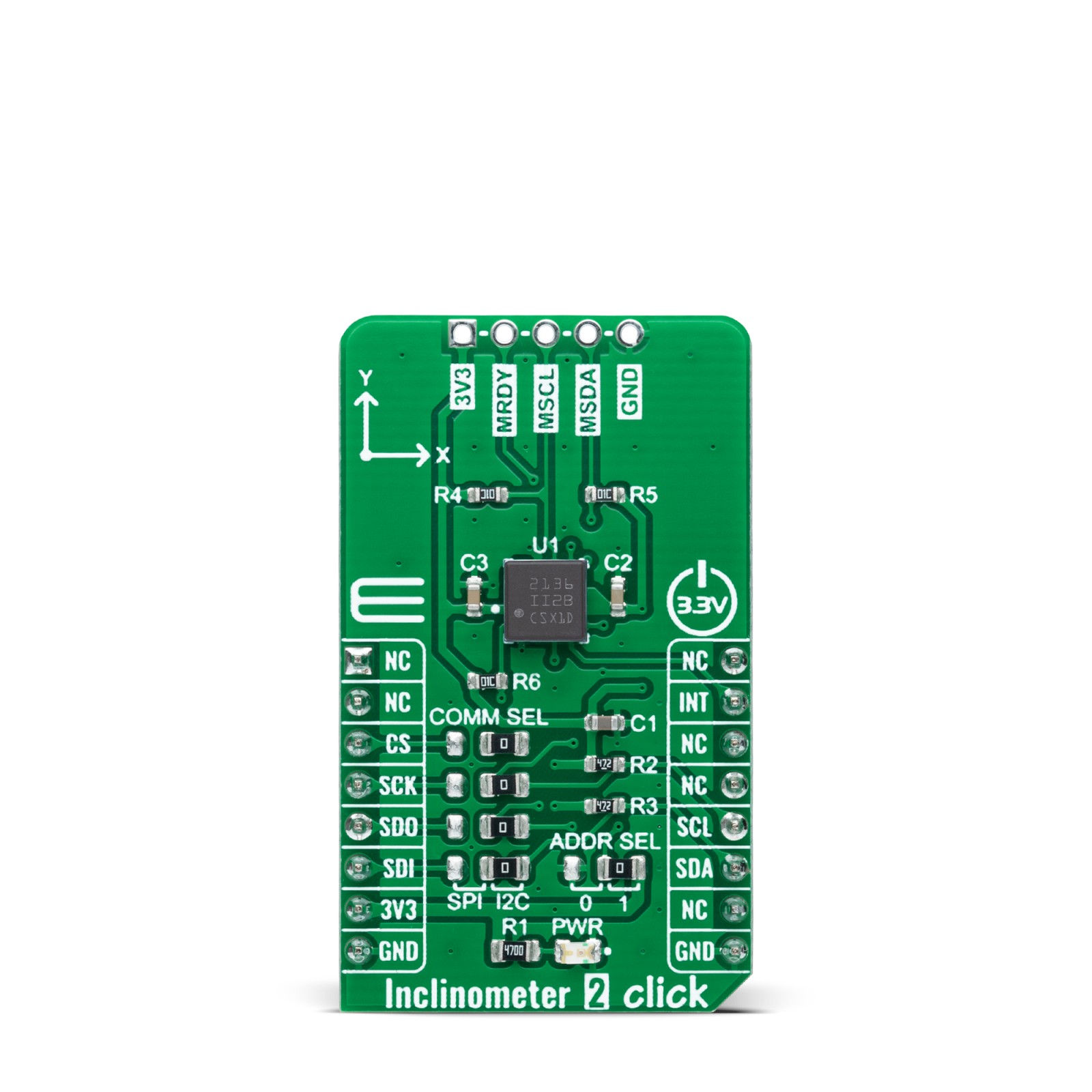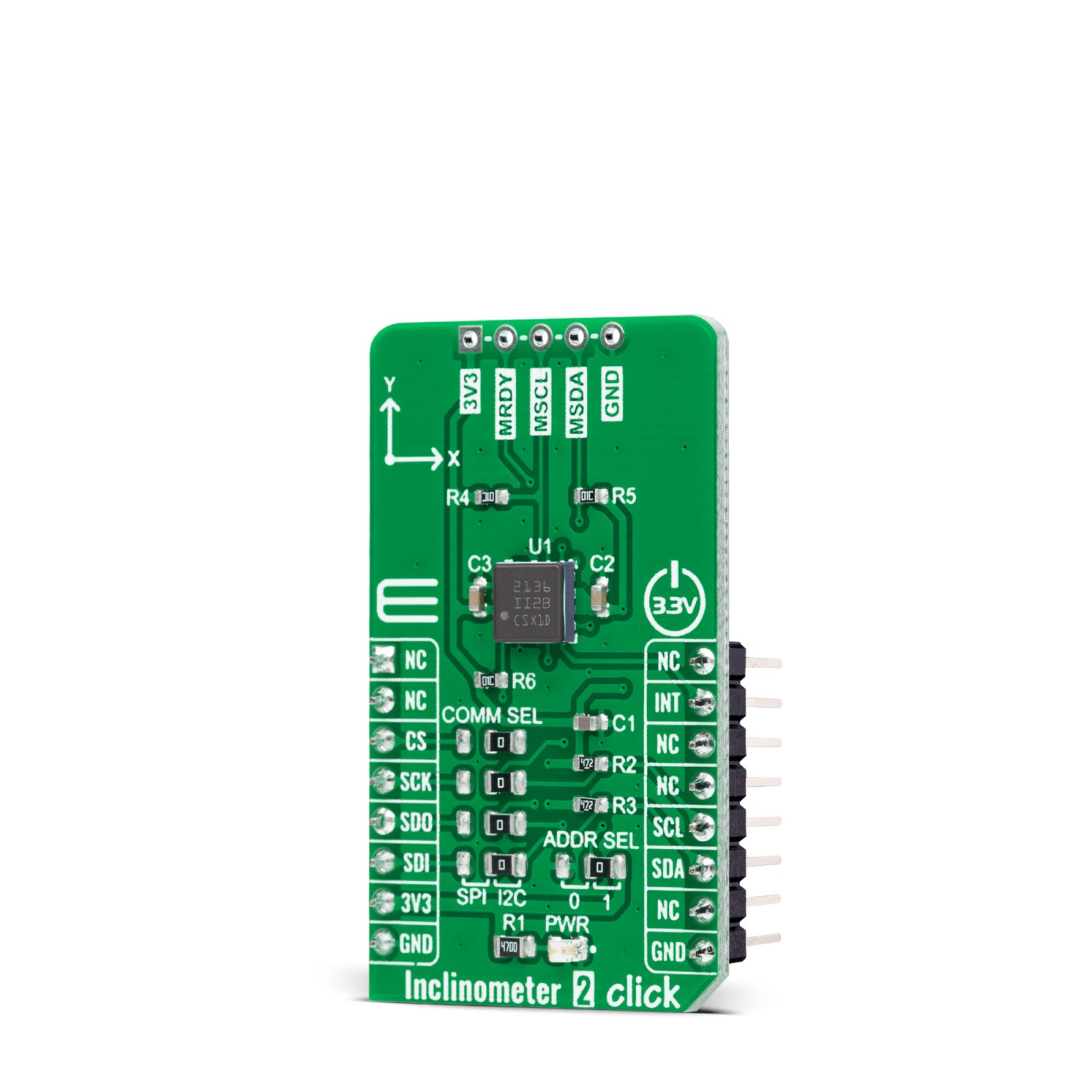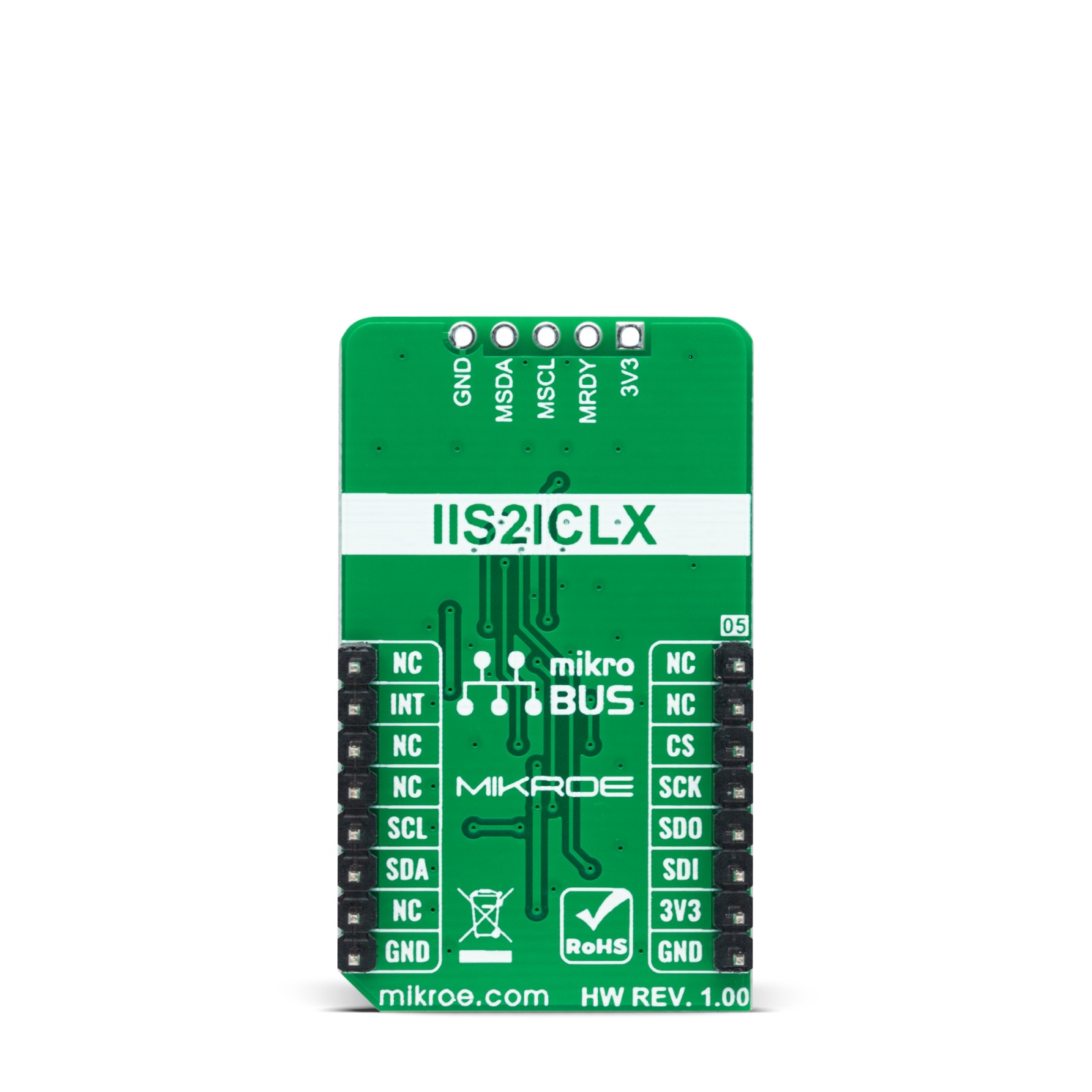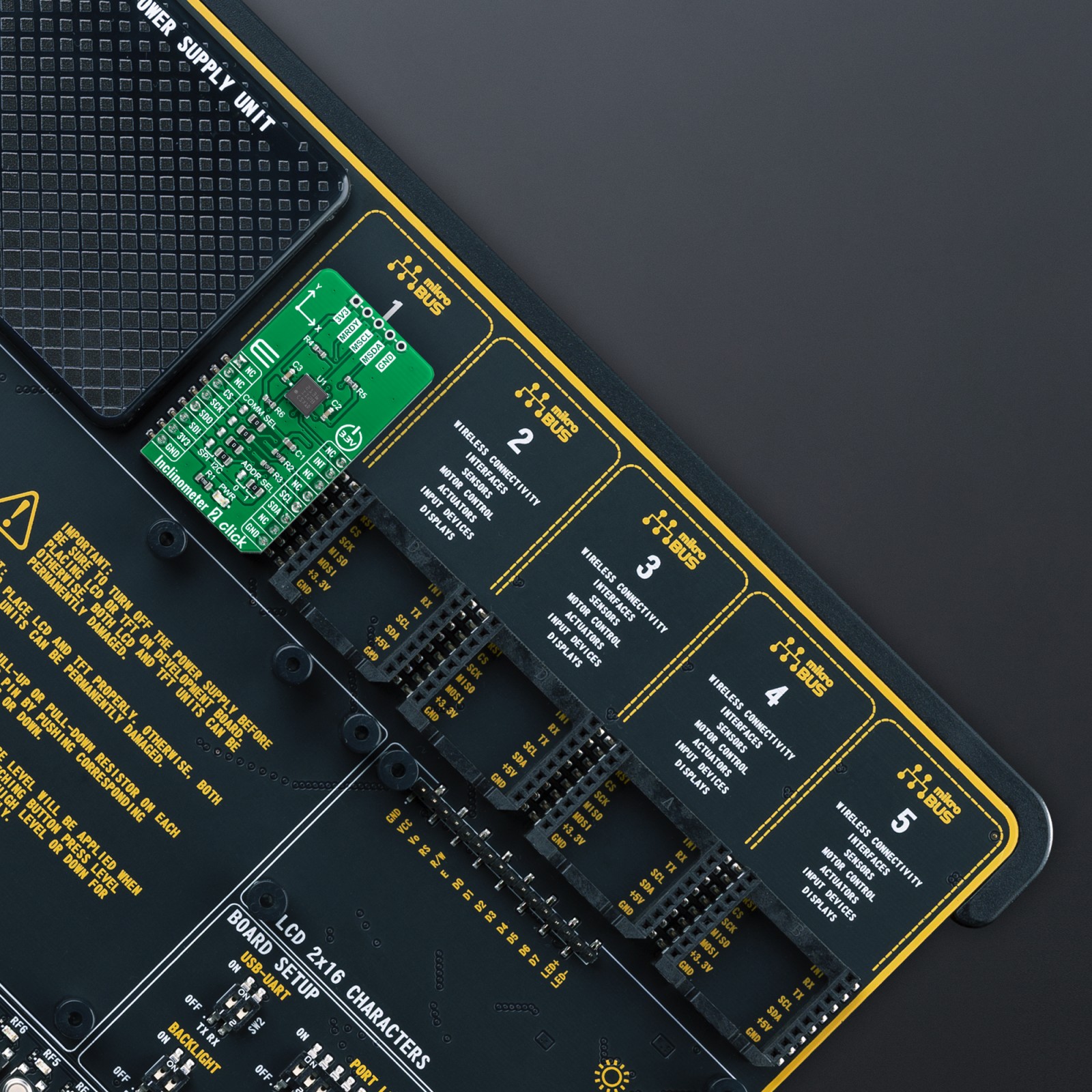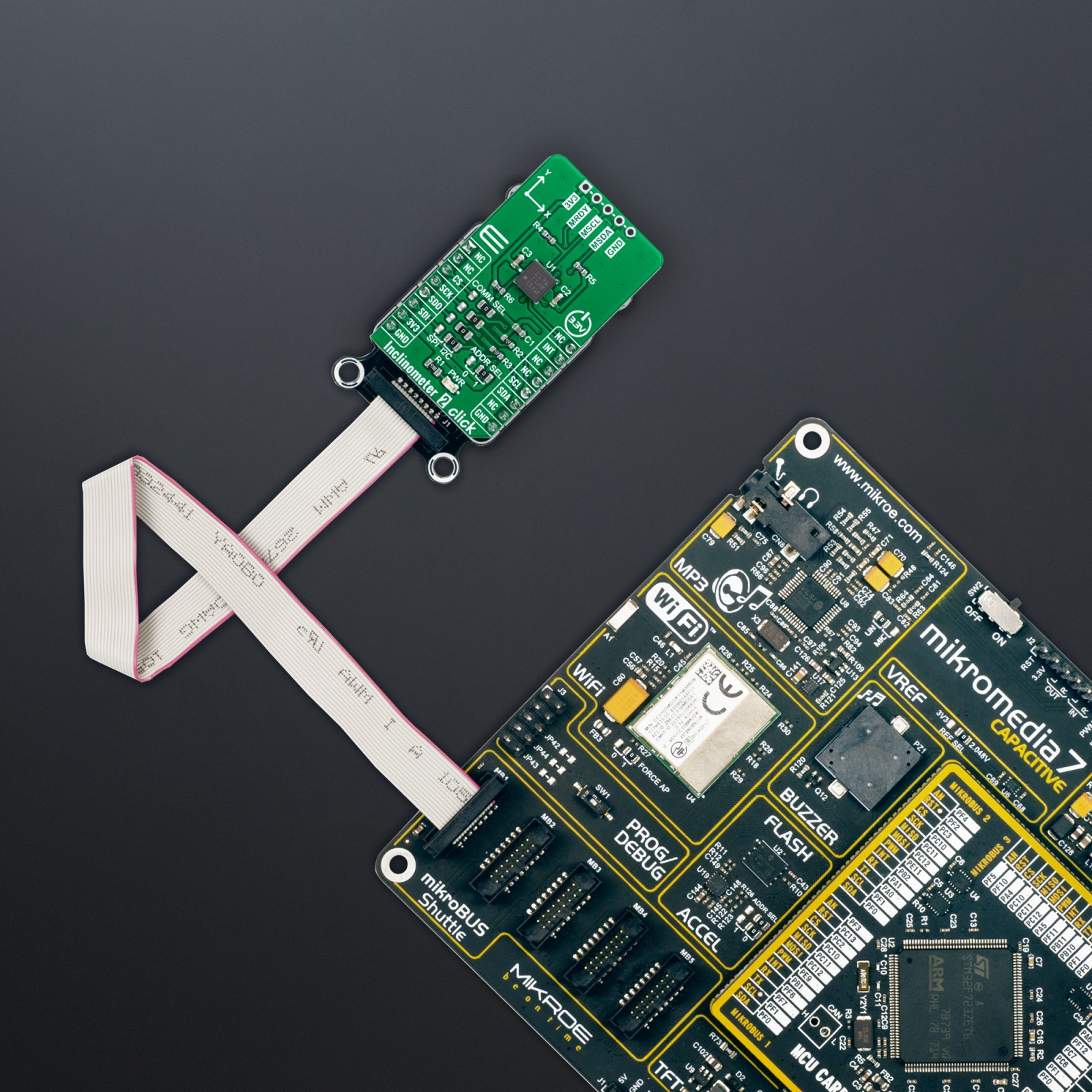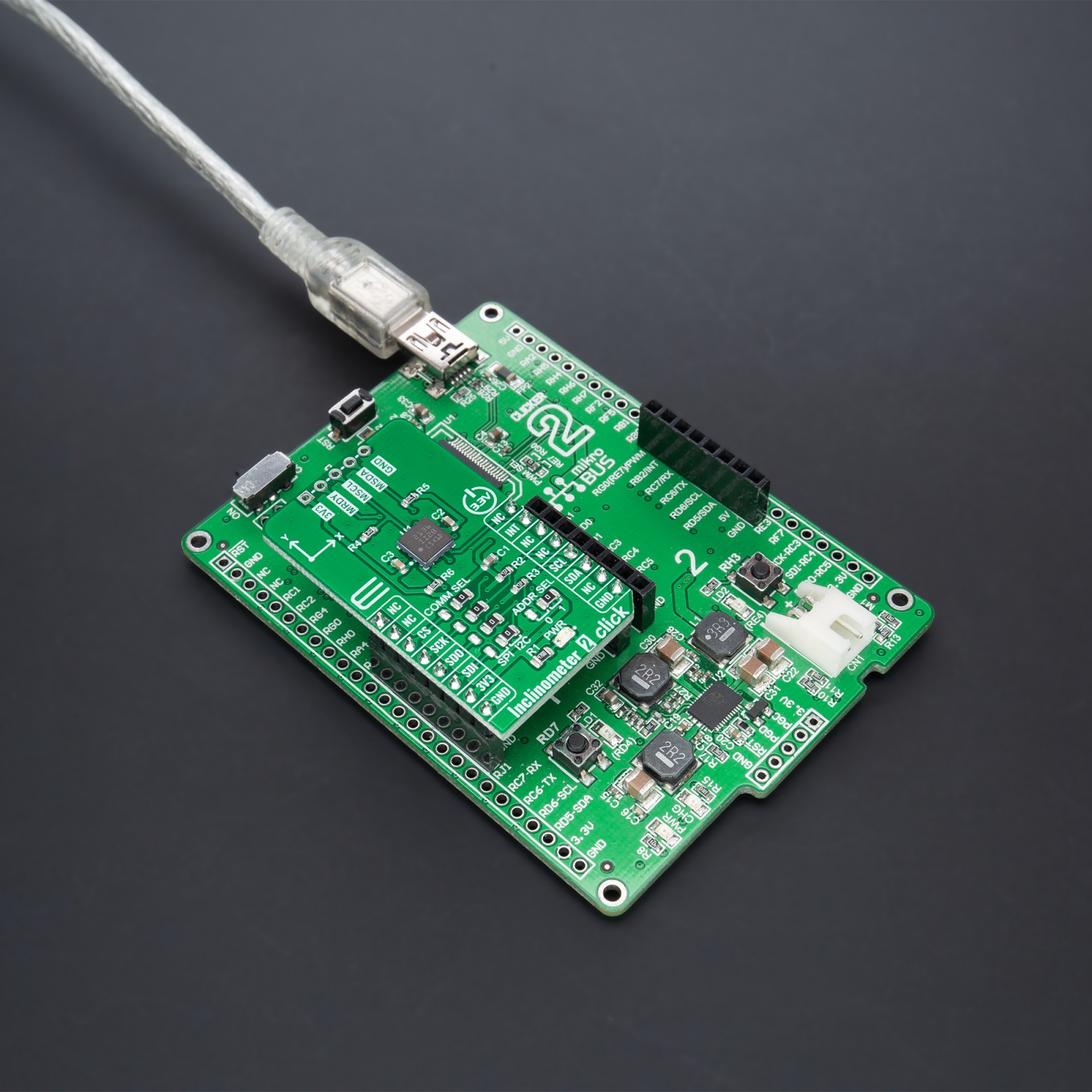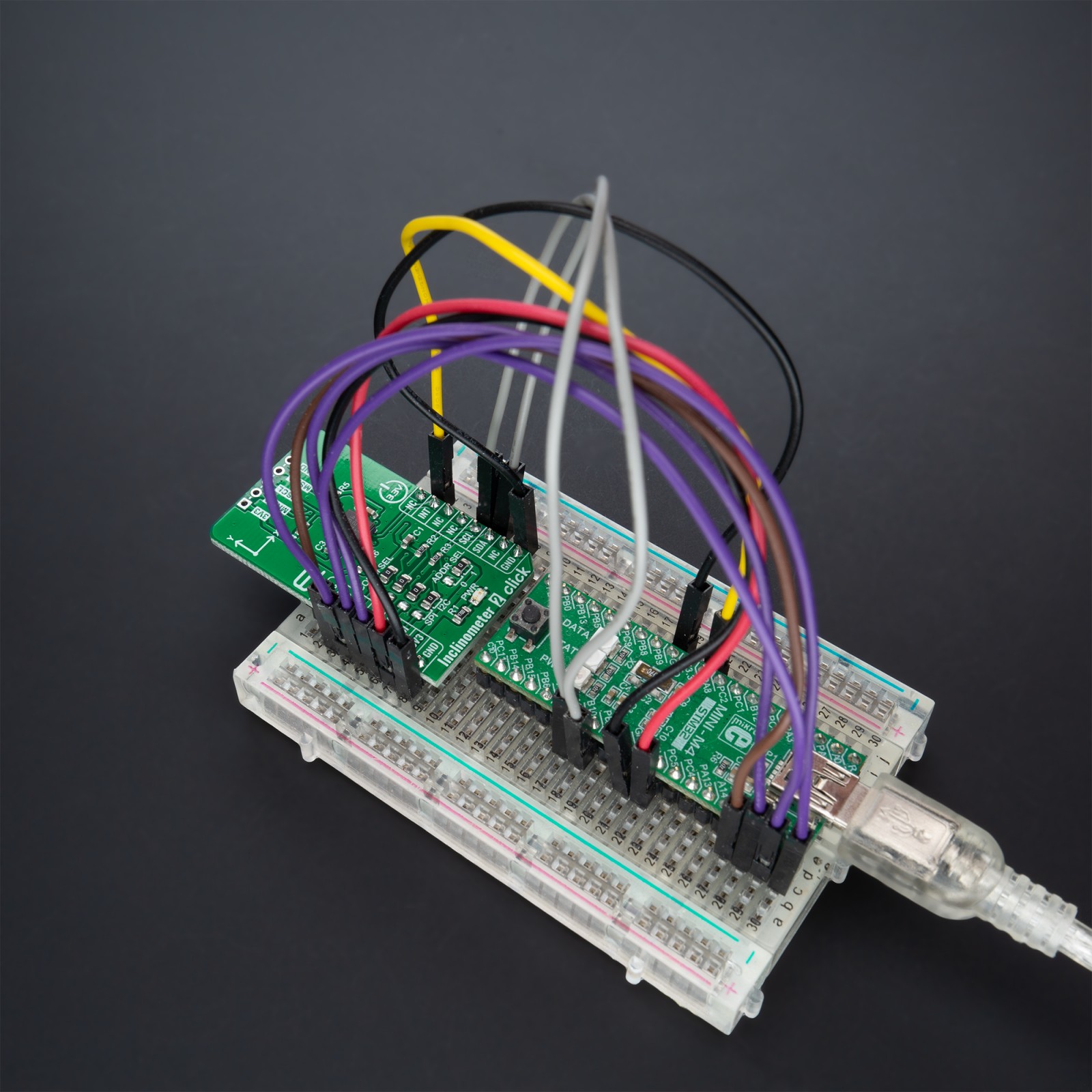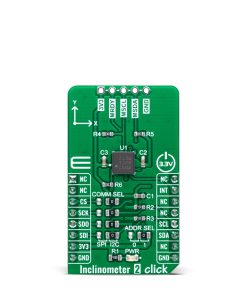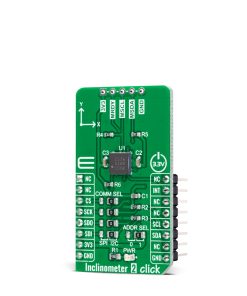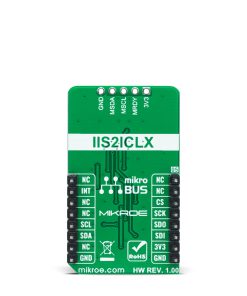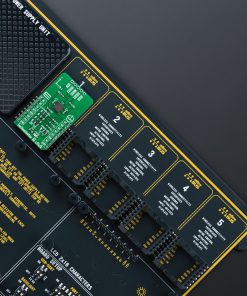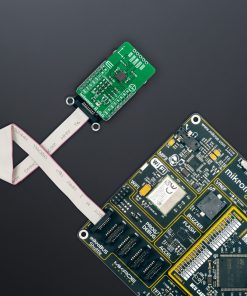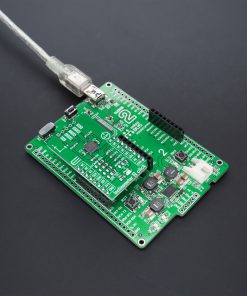Inclinometer 2 Click
R1,650.00 ex. VAT
Inclinometer 2 Click is a compact add-on board that measures the orientation angle of an object with respect to the force of gravity. This board features the IIS2ICLX, high accuracy, and resolution two-axis inclinometer from STMicroelectronics. It allows selectable full-scale measurements in ranges of ±0.5/±1/±2/±3g in two axes with a configurable host interface that supports both SPI and I2C serial communication. The sensing element is manufactured using a dedicated micromachining process developed by STMicroelectronics to produce inertial sensors and actuators on silicon wafers. Its high accuracy, stability over temperature, and repeatability make this Click board™ particularly suitable for inclination measurement applications such as precision inclinometers, equipment installation/monitoring, robotics, industrial automation, and more.
Inclinometer 2 Click is supported by a mikroSDK compliant library, which includes functions that simplify software development. This Click board™ comes as a fully tested product, ready to be used on a system equipped with the mikroBUS™ socket.
Stock: Lead-time applicable.
| 5+ | R1,567.50 |
| 10+ | R1,485.00 |
| 15+ | R1,402.50 |
| 20+ | R1,349.70 |

